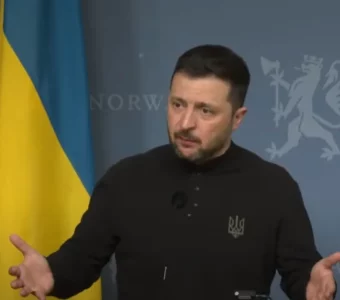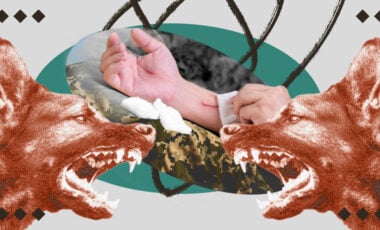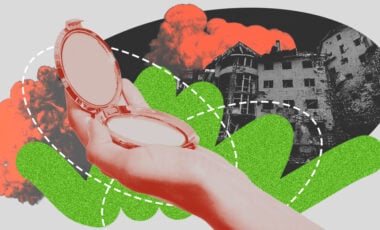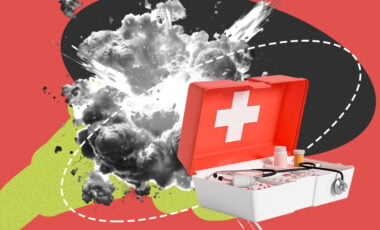Mining uranium: how safe is it and why do it? Myths and truths
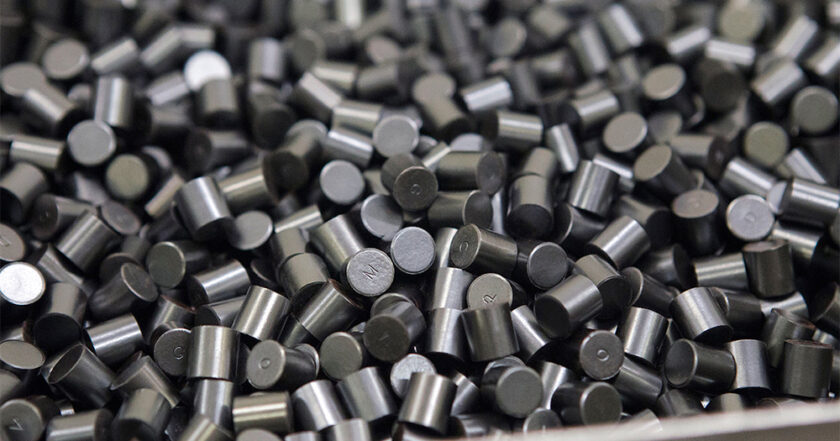
What is it like to live near a uranium mining site? What are the benefits of the ore? What ancient ideas do you need to get rid of? Together with a professor and mining engineer-technologist, we refuted five of the most common myths about uranium.
We are usually afraid of everything, someway connected with radiation. It's not surprising. After the Chernobyl tragedy, such fears are reasonable. However, it doesn't mean we can justify every fear. Often fears are caused by ignorance, almost turning them into superstition. So there are many myths about uranium, harking back to hoary antiquity (obviously, most of them are dragged from the Soviet Union). It seems to many to be something terrible and radioactive. But the myths aren't so difficult to dispel. You just have to dig a little deeper. Let's figure it out together.
Some background
Humankind has known natural uranium oxide since ancient times. For instance, people used it as paint for glass and ceramics. Consequently, dishes and jewelry became water-resistant. In fact, even today there are places where uranium glass is produced. For example, in the Czech Republic. The mysterious glow of products made of this glass shouldn't frighten you. It's just a consequence of uranyl groups being capable of absorbing ultraviolet light. After that, they emit light themselves within the visible range. Nothing radioactive!
Uranium was first found by the German scientist Martin Heinrich Klaproth in the late 18th century. Then it was considered an ordinary metal. However, in 1840, it turned out that Klaproth's discovery was not a metal at all, but an oxide, i.e. uranium oxide. In 1841, Eugène-Melchior Péligot educed uranium in its purest state.
After another 55 years, the French physicist Antoine Henri Becquerel discovered rays thanks to uranium later called radioactive rays. It was Becquerel's discovery that sealed uranium's further fate and the appliance that humankind found for it.
Since that time, uranium has become surrounded by many myths and prejudices. We talked to Volodymyr Bondarenko, a professor, Head of the Department of Mining Engineering and Education of the National Technical University "Dnipro Polytechnic" (Dnipro), and asked him to confirm or refute the most common myths about uranium. "There are many misconceptions about uranium," Professor Bondarenko told us. "They're often ill-founded and unscientific. Most of these fears come from ignorance."
That's what came out of it:
Myth 1. Uranium mining is a disaster for the environment
"It's not true. It all depends on the mining method used. If you use the old methods of open-pit mining, then we see harmful factors. It generates a lot of dust. But now, no one works like this in the world (perhaps only Russia). Now uranium is mined by the modern method of underground leaching. This technology's purpose is to minimize any impact on the environment.
All processes take place underground, as a rule, between two water shut-off levels (or rock sheets). Giving the Ukrainian geology, these are clays. They are aquicludes that don't let water through. Then comes the structure called sand, and in the sand, there's uranium in its occurrences. Below, there are aquicludes again. Therefore, everything happens between these two waterproofing layers. Thus, nothing gets to the surface and into the deep during the extraction process. Including into drinking waters or wanters in a surface with plants, and so on."
Note. There are three ways to mine uranium ore:
- The first method is open when the uranium ore is close to the ground. With this method, a quarry is dug up by bulldozers, the ore is extracted with excavators and transported to the processing complex.
- The second method is underground and used with deep ore occurrence. This method is more expensive and used with a high concentration of uranium in the solid. A vertical shaft (up to 2 km deep) is drilled. From it, horizontal workings deviate. In them (in the levels), the miners hammer the solid and then lift the ore up with special freight elevators. Then the ore is transported for processing. It is like mining coal. After the work ends, each sheet is poured with concrete and a new one is prepared. Powerful ventilation works in the layers, and people stand ankle-deep in the water needed when drilling rocks as it suppresses dust.
- The third method is in situ leaching. It differs from the previous ones. Through 6 wells drilled into the ore body, an alkaline solution is injected there. After that, another well is drilled in the center and through it, a solution saturated with uranium salts is pumped out to the surface. It is passed through special sorption columns where uranium salts are collected on a special resin. The resin is again treated with sulfuric acid. It happens until the concentration of uranium in the solution becomes sufficient.
However, it's not uranium yet, but oxide. Obtaining pure uranium is a complex chain of chemical reactions and transformations. And it's not enough just to isolate pure metal. Uranium itself doesn't carry the value for using it at nuclear power plants. It needs enriching. All this happens later, not at the mine.
Myth 2. Dead soil remains at the uranium mining site
"It's also not true. It's safe even during work on the surface. For example, in Kazakhstan (I am related to Kazakhstan as my graduate student is studying there, analyzing the method of underground leaching), there are a lot of such objects, and deposits. And while they are carrying out leaching at a depth of 50-70 meters, there's a forest on the surface. And a recreation area."
Note. Indeed, today the uranium mining process's impact on the environment is minimal. After mining, the involved territory is reclaimed (of course, if needed; with a forest sitting on the surface and during mining, the need disappears altogether). Reclamation takes place most effectively using the underground leaching method. The environment suffers the least damage, and it is easy to restore it.
Myth 3. It's dangerous to live near the uranium mining site
"It's untrue and impossible because all processes take place underground. Of course, a lot depends on the quality of work so that the wells aren't disturbed, so they don't penetrate the aquifer "along the way" underground. But the probability is minimal."
Note. Uranium, as we know, is a radioactive element. But how strong is the radioactivity? We can relax, the uranium radiation is weak. The explanation is that natural uranium contains three isotopes: 234, 235, and 238, and over 99 percent of the uranium in nature is contained in the form of the uranium-238 isotope, which is almost non-dangerous to humans. It is considered being long-lived, with a half-life of 4.5 billion years.
Given this long period, we can say that it emits radiation weakly. Its alpha particles don't go through human skin. Interestingly, Academician Kurchatov, who worked with uranium in Soviet times, simply wiped his hands with a handkerchief after contact with metal. He didn't suffer from radiation sickness. Such contact is completely harmless. More so, once people could even buy uranium compounds at a pharmacy, like sodium uranate. Uranium itself has extremely low radioactivity.
Myth 4. Working in uranium mining is the path to death
"No, it doesn't correspond to reality, because what we extract is closer to the background. That's what we experience in our daily life when we sit on granite, for instance. Granite indicates some level of radioactivity. It has a natural radiation background. With mining uranium, it's the same. How mining happens: we obtain the grains, and then, when we deliver them to the factories, the concentration rises. It is the chemical plants, where the concentration increases, which require a certain regime. There's nothing like it at the site. We dissolved the ore, sent it over, and that's it.
The uranium that we extract from the ground is uranium in the disseminated form: grams per ton of solid. At such concentrations, you can hold it in your hands, and nothing will happen."
Note. Uranium nuggets don't exist in nature. So on average, about 1.5 kg of uranium is obtained from 1 ton of ore. The uranium from the mine is far from being nuclear fuel. It is an ore with low background radioactivity.
In order to use uranium at a nuclear power plant, it must be enriched. The concentration of uranium-235 must be increased from natural to that required for running a nuclear reactor. And uranium-238 is just a gray, heavy metal. Suitable for making a keychain. Absolutely safe.
Many have heard of the scary stories about uranium mines. Back in the Soviet Union, there were legends that criminals, doomed to die, worked in uranium mines. There were also myths about the obligatory lead underwear for miners. Of course, nothing of the kind actually happened (although miners still need a special suit for work). Then uranium was a greater danger than it is today, though.
Myth 5. Ukraine need not extract its own uranium, nuclear power plants are already operating normally
"We are talking about the fact that we want to be an economically and energetically independent country. If we depend on gas, we practically depend on coal, and besides, there are enormous problems with the use of coal in the world. Over time, we will get away from it, because it's not environmentally friendly, and leads to a climate crisis because of the CO2 excessive production when burning organic products (coal, oil, gas, etc.). And then, we have mid-autumn with 26 degrees above zero outside, although earlier there were always frosts.
We have to live with the atom. It's a sign of civilization, a step towards progress. And even with alternative energy sources like solar energy or wind energy, we'll still need stable energy sources. Nuclear energy is the most environmentally friendly among stable ones.
In addition, nuclear power now accounts for over 50 percent in Ukraine.
In this field, we still depend on Russia, as we buy uranium from the country at war with us. And now, while developing our uranium, we want to enter a closed cycle inside Ukraine. That's great. We can provide ourselves with fuel and thus ensure energy security."
Note. In terms of energy production, one uranium tablet is equal to a ton of oil (!) Therefore, it's not surprising that it's used as nuclear fuel at nuclear power plants. Canada, Russia, Kazakhstan, and Australia have the largest uranium reserves. In Ukraine, the proven reserves of uranium are over 200 thousand tons. With them, we are among the top ten countries in the world in terms of reserves of this mineral. There are only 23 explored uranium deposits in Ukraine.
Source: Andrii Klimenko, Cеnsor.NET





